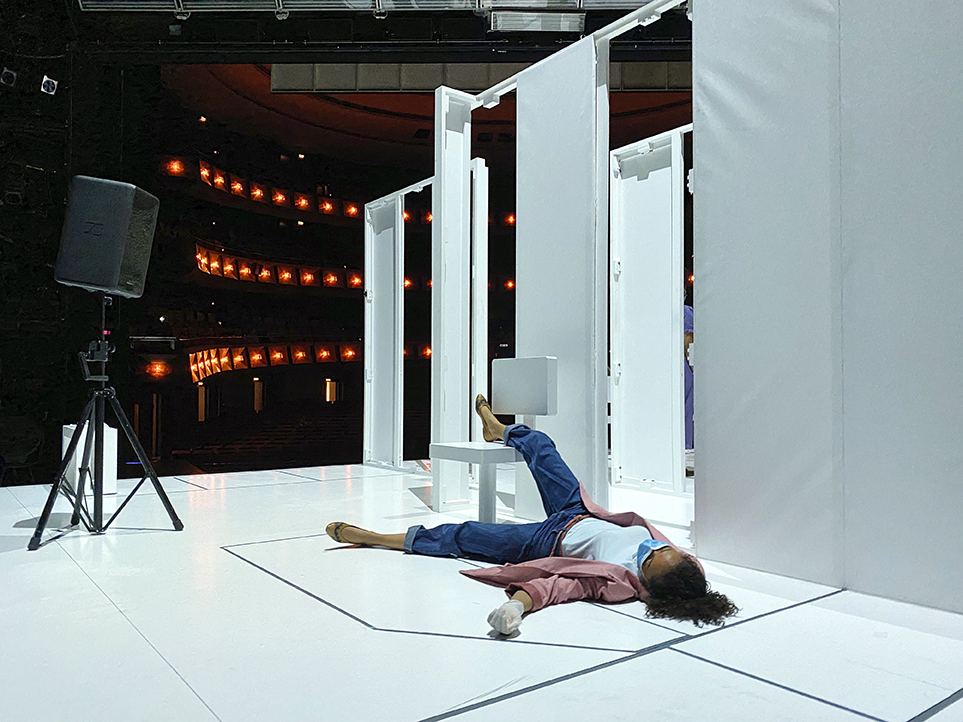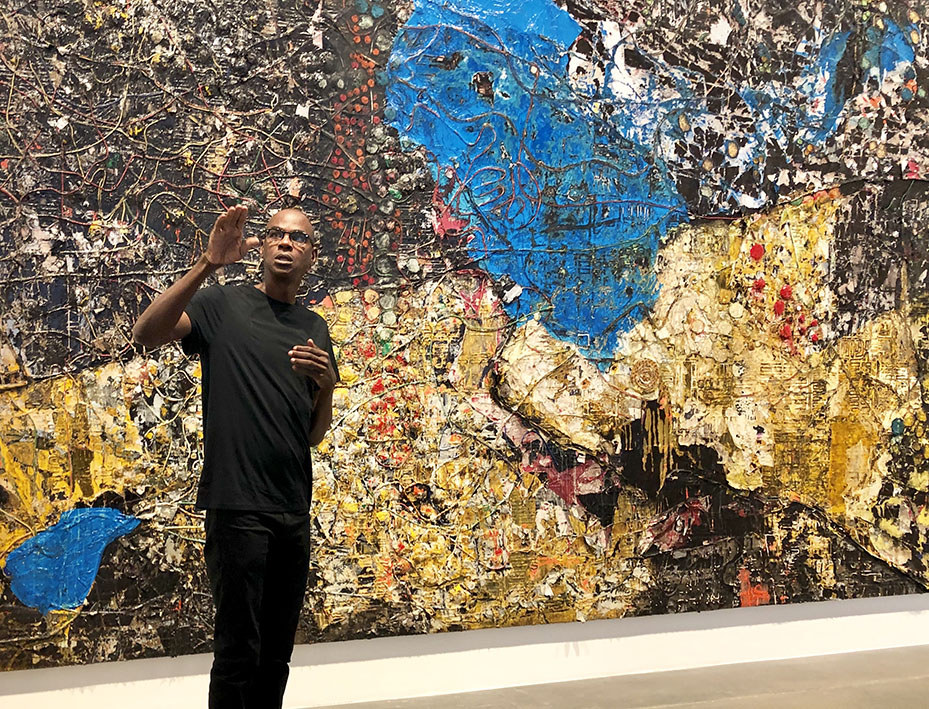 During the promotion of ‘The Girl with the Dragon Tattoo’, the Swedish actor, Stellan Skarsgård, was reluctant to talk about his character, Martin Vanger. “I can’t [talk about him] because then I will ruin the film”, he said on the Charlie Rose show.
At the end of the film Skarsgård’s character makes a radical change comparable to that of Edward Norton’s character, Aaron, in ‘Primal Fear’. The allegedly sympathetic congenial man turns out to be a pathological serial killer – a psychopath.
Again, Daniel Craig plays a character who endures a gruesome torture scene. In ‘Casino Royale’, Le Chiffre repeatedly swings a knotted rope at James Bond’s testicles. In ‘The Girl with the Dragon Tattoo’, Martin Vanger’s mode of torture of Blomkvist (Craig’s character) was to hoist him by a noose, with his feet barley scraping the floor, to Enya’s ‘Orinoco Flow’ playing in the background. In the scene Vanger says to him: “I didn’t force you to come in. I just asked you to come in for a drink and you said ‘yes’. Isn’t it amazing that the fear of offending is bigger than the fear of pain?”
Now that the film is released, Skarsgård is open to provide some insight into the character of Martin Vanger. Although, he does confess that, as an actor, talking about his film characters is the least interesting topic for him to discuss.
200%: What made you interested to play Martin Vanger?
Stellan Skårsgard: I wanted to work with David Fincher. When David was in Stockholm, scouting for the film, I received a call that he wanted to meet me. At that time, the film wasn’t cast yet, nor was the script ready; it was still a work in progress. Martin Vanger had the potential of becoming a good role, but it wasn’t a good role yet. It became a good role. I had seen the Swedish film adaptation of the book and their Martin Vanger was not a good role. My interest to play him had much more to do with the director. I could have said ‘yes’ to Fincher even if he had a one page of script for me.
200%: Do you choose your roles to explore different facets of your personality?
SS: It is not as much of trying to find different facets in myself but I’m trying to stretch myself out into territory I never visited before. I try to find challenges in roles I haven’t played before: if I feel it is unchartered territory it becomes much more interesting. As an actor I’m still learning. I want to become a better actor all the time.
200%: Did you draw on other movie ‘creeps’ for inspiration for you role as Vanger?
SS: I have been exploring the entire heritage of movie villains. What it really teaches you is what you should try to avoid. I wasn’t interested in making a film that just became about playing the bad guy. To a certain extent, I wanted people to be able to see themselves in Vanger. It’s more interesting that the audience starts to like Vanger for a while – they might see something of him in themselves. I wanted to show much more Vanger’s vulnerability and show his human side.
Especially in films, we have a tendency to show the world in a very simplistic way wherein good is always good and bad is always bad, but that’s not the way in which the world works. I think it is dangerous to think like that. Even the previous President of the United States, George W. Bush, started talking about good guys and bad guys after 9/11. It’s a dangerous misconception of the world and it should be railed against all the time.
During the promotion of ‘The Girl with the Dragon Tattoo’, the Swedish actor, Stellan Skarsgård, was reluctant to talk about his character, Martin Vanger. “I can’t [talk about him] because then I will ruin the film”, he said on the Charlie Rose show.
At the end of the film Skarsgård’s character makes a radical change comparable to that of Edward Norton’s character, Aaron, in ‘Primal Fear’. The allegedly sympathetic congenial man turns out to be a pathological serial killer – a psychopath.
Again, Daniel Craig plays a character who endures a gruesome torture scene. In ‘Casino Royale’, Le Chiffre repeatedly swings a knotted rope at James Bond’s testicles. In ‘The Girl with the Dragon Tattoo’, Martin Vanger’s mode of torture of Blomkvist (Craig’s character) was to hoist him by a noose, with his feet barley scraping the floor, to Enya’s ‘Orinoco Flow’ playing in the background. In the scene Vanger says to him: “I didn’t force you to come in. I just asked you to come in for a drink and you said ‘yes’. Isn’t it amazing that the fear of offending is bigger than the fear of pain?”
Now that the film is released, Skarsgård is open to provide some insight into the character of Martin Vanger. Although, he does confess that, as an actor, talking about his film characters is the least interesting topic for him to discuss.
200%: What made you interested to play Martin Vanger?
Stellan Skårsgard: I wanted to work with David Fincher. When David was in Stockholm, scouting for the film, I received a call that he wanted to meet me. At that time, the film wasn’t cast yet, nor was the script ready; it was still a work in progress. Martin Vanger had the potential of becoming a good role, but it wasn’t a good role yet. It became a good role. I had seen the Swedish film adaptation of the book and their Martin Vanger was not a good role. My interest to play him had much more to do with the director. I could have said ‘yes’ to Fincher even if he had a one page of script for me.
200%: Do you choose your roles to explore different facets of your personality?
SS: It is not as much of trying to find different facets in myself but I’m trying to stretch myself out into territory I never visited before. I try to find challenges in roles I haven’t played before: if I feel it is unchartered territory it becomes much more interesting. As an actor I’m still learning. I want to become a better actor all the time.
200%: Did you draw on other movie ‘creeps’ for inspiration for you role as Vanger?
SS: I have been exploring the entire heritage of movie villains. What it really teaches you is what you should try to avoid. I wasn’t interested in making a film that just became about playing the bad guy. To a certain extent, I wanted people to be able to see themselves in Vanger. It’s more interesting that the audience starts to like Vanger for a while – they might see something of him in themselves. I wanted to show much more Vanger’s vulnerability and show his human side.
Especially in films, we have a tendency to show the world in a very simplistic way wherein good is always good and bad is always bad, but that’s not the way in which the world works. I think it is dangerous to think like that. Even the previous President of the United States, George W. Bush, started talking about good guys and bad guys after 9/11. It’s a dangerous misconception of the world and it should be railed against all the time.
 200%: In terms of playing a psychopathic, pathological serial killer, did you draw any inspiration from Anthony Hopkins’s performance as Hannibal Lector in ‘The Silence of the Lambs’ who made him so believably creepy as he was also a very intelligent, erudite man showing his human side?
SS: I thought of it, of course, but I could not, as my role is so different compared to the one he played. I had to be much cagier. For most of the film I couldn’t show who I was. I couldn’t become that strange, almost larger than life, character like Lector. Also, in a way, his character was a good guy as at the end of the film he gets the audience on his side when he says: “I’m seeing an old friend for lunch”. He gets all the audience to laugh with him with that line.
200%: How did you prepare yourself as an actor to play such a horrible, brutal, evil man? Is there any particular research you undertook?
SS: I’m not a method actor so I work very much from the script, what the film needs. I did, though, study [the behaviour of] psychopaths and sociopaths and learned that they are very good in hiding who they really are. They can even fool their psychotherapist and psychiatrists as they portray themselves as very emphatic and wonderful people. That discovery gave me a lot of liberty as then I could have this very radical change that I have in this movie; most of the time I play an extremely sympathetic person who turns the game at a certain point to show what a miserable person I am.
200%: Despite the horrible, repulsive things your character does, was it for you, as an actor fun and exciting to play a character like Martin Vanger?
SS: Yes, it was very exciting to play him. It was also difficult as I had a five minute monologue in the torture scene but it shouldn’t feel like a monologue. There has to be a reason for him to say all those things. It helped that Vanger is actually talking to a man [Blomkvist] who has a noose around his neck with Enya’s music playing in the background.
200%: Do you agree that playing Enya’s ‘Orinoco Flow’ in Vanger’s torture chamber is the ultimate example of soundtrack dissonance?
SS: Yes, it is such a collision of ideas. It tears everything up as you have this peaceful, soothing calm music and the scene is in absolute contrast with that. I love it when the music is not sort of saying the same thing that to what is being said in the scene. I like the contradiction and it opens the imagination of the audience.
200%: Was that the reason as to why Martin Vanger’s contemporary, minimalistic designed house was so clean and modern? To cover up his dark side?
SS: I think so. I didn’t design the house. Perhaps I might have been a little less extreme if I had designed it. On the other hand, there is something threateningly, orderly and cold about the house, and I always have a suspicion against people that have too much neatness around them. In that aspect, the house suited the character very well.
200%: In terms of playing a psychopathic, pathological serial killer, did you draw any inspiration from Anthony Hopkins’s performance as Hannibal Lector in ‘The Silence of the Lambs’ who made him so believably creepy as he was also a very intelligent, erudite man showing his human side?
SS: I thought of it, of course, but I could not, as my role is so different compared to the one he played. I had to be much cagier. For most of the film I couldn’t show who I was. I couldn’t become that strange, almost larger than life, character like Lector. Also, in a way, his character was a good guy as at the end of the film he gets the audience on his side when he says: “I’m seeing an old friend for lunch”. He gets all the audience to laugh with him with that line.
200%: How did you prepare yourself as an actor to play such a horrible, brutal, evil man? Is there any particular research you undertook?
SS: I’m not a method actor so I work very much from the script, what the film needs. I did, though, study [the behaviour of] psychopaths and sociopaths and learned that they are very good in hiding who they really are. They can even fool their psychotherapist and psychiatrists as they portray themselves as very emphatic and wonderful people. That discovery gave me a lot of liberty as then I could have this very radical change that I have in this movie; most of the time I play an extremely sympathetic person who turns the game at a certain point to show what a miserable person I am.
200%: Despite the horrible, repulsive things your character does, was it for you, as an actor fun and exciting to play a character like Martin Vanger?
SS: Yes, it was very exciting to play him. It was also difficult as I had a five minute monologue in the torture scene but it shouldn’t feel like a monologue. There has to be a reason for him to say all those things. It helped that Vanger is actually talking to a man [Blomkvist] who has a noose around his neck with Enya’s music playing in the background.
200%: Do you agree that playing Enya’s ‘Orinoco Flow’ in Vanger’s torture chamber is the ultimate example of soundtrack dissonance?
SS: Yes, it is such a collision of ideas. It tears everything up as you have this peaceful, soothing calm music and the scene is in absolute contrast with that. I love it when the music is not sort of saying the same thing that to what is being said in the scene. I like the contradiction and it opens the imagination of the audience.
200%: Was that the reason as to why Martin Vanger’s contemporary, minimalistic designed house was so clean and modern? To cover up his dark side?
SS: I think so. I didn’t design the house. Perhaps I might have been a little less extreme if I had designed it. On the other hand, there is something threateningly, orderly and cold about the house, and I always have a suspicion against people that have too much neatness around them. In that aspect, the house suited the character very well.
 200%: Before Stieg Larsson wrote the trilogy, he wrote for a quarterly ‘Expo’ – a journalistic watchdog writing against right-wing movements in Europe. He was concerned about the abuse of women, immigrants, and Jews that was becoming acceptable at the turn of the century in Sweden. As you’re from Sweden, could you tell me whether Larsson’s concerns are shared?
SS: Yes, they are. When Larsson wrote the ‘Millenium’ books they were a reflection of the debate that was going on in the media at the time. Everybody was talking about trafficking and the abuse of women in the 1990s. At the same time, a left-wing union activist had been murdered. These were very hot topics in the press and Larsson incorporated that in his books. The books don’t present a good image of Sweden, but it is still one of the most peaceful and safest countries in the world.
200%: As an actor you’re always asked about the character you’re portraying. Do you think that’s the most exciting thing for you to talk about as an actor?
SS: No, I rather not talk about the character at all. As an actor it’s very hard to put my creative process into words. It’s not material that automatically lends itself to interesting conversation.
What I find much more interesting to talk about is the content of the film; the political aspect and the moral discussions such as the view on humanity and view on society – that is where my interest lies.
With ‘The Girl with a Dragon Tattoo’ or another film I did, ‘Taking Sides’, you can talk about things around the film. In the latter, I played the controversial German conductor Wilhelm Furtwangler who was charged of having served the Nazi-regime after the war. The film triggers discussions about responsibility and morality. Subjects I find extremely interesting and fascinating to talk about.
200%: I’m listening.
SS: We touched upon it earlier when I spoke of the misconception of dividing the world into good and bad. It’s very important that we don’t portray the Nazi’s or, for that matter, the Germans, as all totally evil, inhuman monsters. You have to understand that [as human beings] we’re all potentially capable of doing horrible things, as they did. When we have an understanding of that, we might be able to protect ourselves from becoming like that.
Interview written and conducted by Thierry Somers with a contribution by Marie Drysdale
Picture: Stellan Skårsgard as Martin Vanger in ‘The Girl with the Dragon Tattoo’
200%: Before Stieg Larsson wrote the trilogy, he wrote for a quarterly ‘Expo’ – a journalistic watchdog writing against right-wing movements in Europe. He was concerned about the abuse of women, immigrants, and Jews that was becoming acceptable at the turn of the century in Sweden. As you’re from Sweden, could you tell me whether Larsson’s concerns are shared?
SS: Yes, they are. When Larsson wrote the ‘Millenium’ books they were a reflection of the debate that was going on in the media at the time. Everybody was talking about trafficking and the abuse of women in the 1990s. At the same time, a left-wing union activist had been murdered. These were very hot topics in the press and Larsson incorporated that in his books. The books don’t present a good image of Sweden, but it is still one of the most peaceful and safest countries in the world.
200%: As an actor you’re always asked about the character you’re portraying. Do you think that’s the most exciting thing for you to talk about as an actor?
SS: No, I rather not talk about the character at all. As an actor it’s very hard to put my creative process into words. It’s not material that automatically lends itself to interesting conversation.
What I find much more interesting to talk about is the content of the film; the political aspect and the moral discussions such as the view on humanity and view on society – that is where my interest lies.
With ‘The Girl with a Dragon Tattoo’ or another film I did, ‘Taking Sides’, you can talk about things around the film. In the latter, I played the controversial German conductor Wilhelm Furtwangler who was charged of having served the Nazi-regime after the war. The film triggers discussions about responsibility and morality. Subjects I find extremely interesting and fascinating to talk about.
200%: I’m listening.
SS: We touched upon it earlier when I spoke of the misconception of dividing the world into good and bad. It’s very important that we don’t portray the Nazi’s or, for that matter, the Germans, as all totally evil, inhuman monsters. You have to understand that [as human beings] we’re all potentially capable of doing horrible things, as they did. When we have an understanding of that, we might be able to protect ourselves from becoming like that.
Interview written and conducted by Thierry Somers with a contribution by Marie Drysdale
Picture: Stellan Skårsgard as Martin Vanger in ‘The Girl with the Dragon Tattoo’










